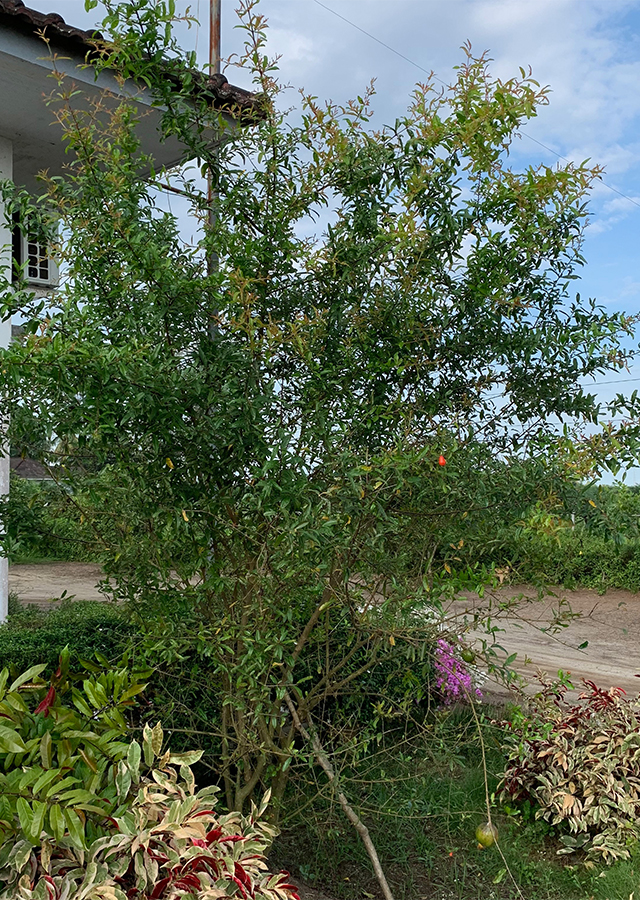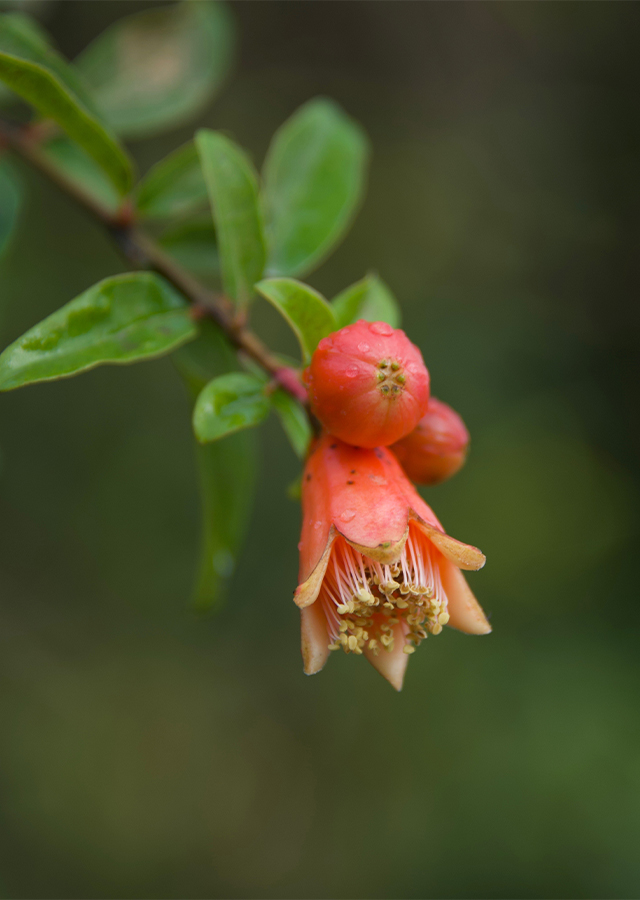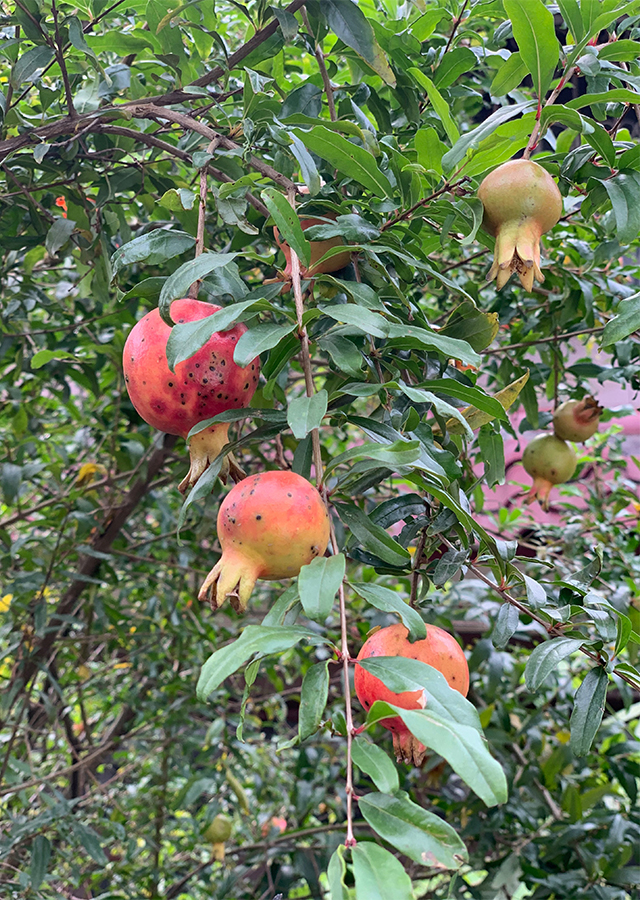Pomegranate
Punica granatum L.
Punicaceae
Location in our garden
Orchard



Synonym
Granatum punicum St.-Lag.
Punica florida Salisb.
Punica grandiflora Steud.
Punica nana L.
Punica spinosa Lam.
Rhoea punica St.-Lag.
Habitus
Shrubs. Slow-growing, spiny, deciduous shrub or small tree, It can reach a height of around 5 m
Part Used
The Whole Plant
Growing Requirements
Full Sunshine
Need Shade
Habitat
Terrestrial
Overview
The pomegranate is native to Asia, particularly to Iran, Afghanistan and the Himalayas. The plant is often cultivated as a fruit crop in warm temperate to subtropical zones, where it is also grown as an ornamental. A multipurpose tree, it is particularly valued for its edible fruit, but also has medicinal properties. It has been used in traditional medicine for more than 3,000 years.
Vernacular Names
Thap thim (Thai), Granada (Tagalog-Philippines), Totüm (Cambodia), Ph'iilaa (Laos), Shi liu (Chinese), Seog ryu (Korean), Thap lu'u (Vietnamese), Madulai (Hindi), Talebin (Burmese), Granaatappel (Dutch), Ecorce de grenade (French), Delima (Indonesia)
Agroecology
Pomegranate is a plant of the subtropics and warm temperate zone. It grows best in areas where annual daytime temperatures are within the range 23-32 °C. It prefers a mean annual rainfall in the range 900-1,200 mm. An easily grown plant, succeeding in soils that are light or heavy, and preferring a well-drained fertile soil.
Morphology
- Roots - fibrous, shallow and spreading.
- Stems - often much branched near the base with axillary spines.
- Leaves - mostly opposite, sometimes subopposite or clustered, oblong-lanceolate, base acute or obtuse, margin entire, shiny above, petiole very short.
- Flowers - waxy, 4-5 cm long and wide, fleshy, acutely 5-8-lobed, crinkled, red, white or variegated, stamens numerous.
- Fruits - globose berry, 6-12 cm in diameter, crowned by the persistent calyx, very variable in colour from yellow-green to black-violet, skin leathery.
- Seeds - obtuse-angular, red, pink or yellow-white.
Cultivation
- By seeds - germinates best at a temperature of 22 °C
- By cuttings - half ripe woods or mature woods.
- By division - can be planted out direct into their permanent positions, though we prefer to pot them up first and plant them out when they are growing away well also by air layering.
Chemical Constituents
Ellagic acid ellagitannins, punicic acid, flavonoids, anthocyanins, gallic acid, punicallagin, ellagitanin, saponins, flavonoids, polyphenol, tannins, phytosterol, β-sitosterol, daucosterol, quercetine, rutin.
Traditional Medicinal Uses
- Studies have shown antibacterial, antifungal, antioxidant, analgesic, antigenotoxicity, antidiarrheal,anticancer, anti-inflammatory, immunomodulatory, wound healing, antidiabetic, radioprotective properties.
- Seeds and pulp are cardiacal and stomachic.
- Leaves, seeds, bark and roots considered hypotensive, antispasmodic and anthelmintic.
- Decoction of root and root bark is used for tuberculosis, chronic debility, chronic feverishness and tapeworms.
- Decoction of tender leaves used as gargle for buccal afflictions.
- Powdered flower buds is used for bronchitis.
- Decoction of the dried rind of the fruit used for stomach pains and dysentery; infusion is used for colitis.
- Juice of fresh fruit used for dyspepsia and as a cooling and thirst-quenching drink for fevers.
- In Iran, flowers are used as remedy for cut wounds, bronchitis, diarrhea, digestive problems.
- In Cuban traditional medicine, it is used for treatment of respiratory diseases.
Part Used
Reference Sources
- StuartXchange. (2016). Philippine Medicinal Plants. Granada. http://www.stuartxchange.com/Granada.html 22-02-2021.
- Sudiarto & Mien A. Rifai. (2016). Pl@nt Use. Punica granatum (PROSEA). https://uses.plantnet-project.org/en/Punica_granatum_(PROSEA) 22-02-2021.
- Fern, Ken. (2014). Useful Tropical Plants. Punica granatum. http://tropical.theferns.info/viewtropical.php?id=Punica+granatum 22-02-2021.



